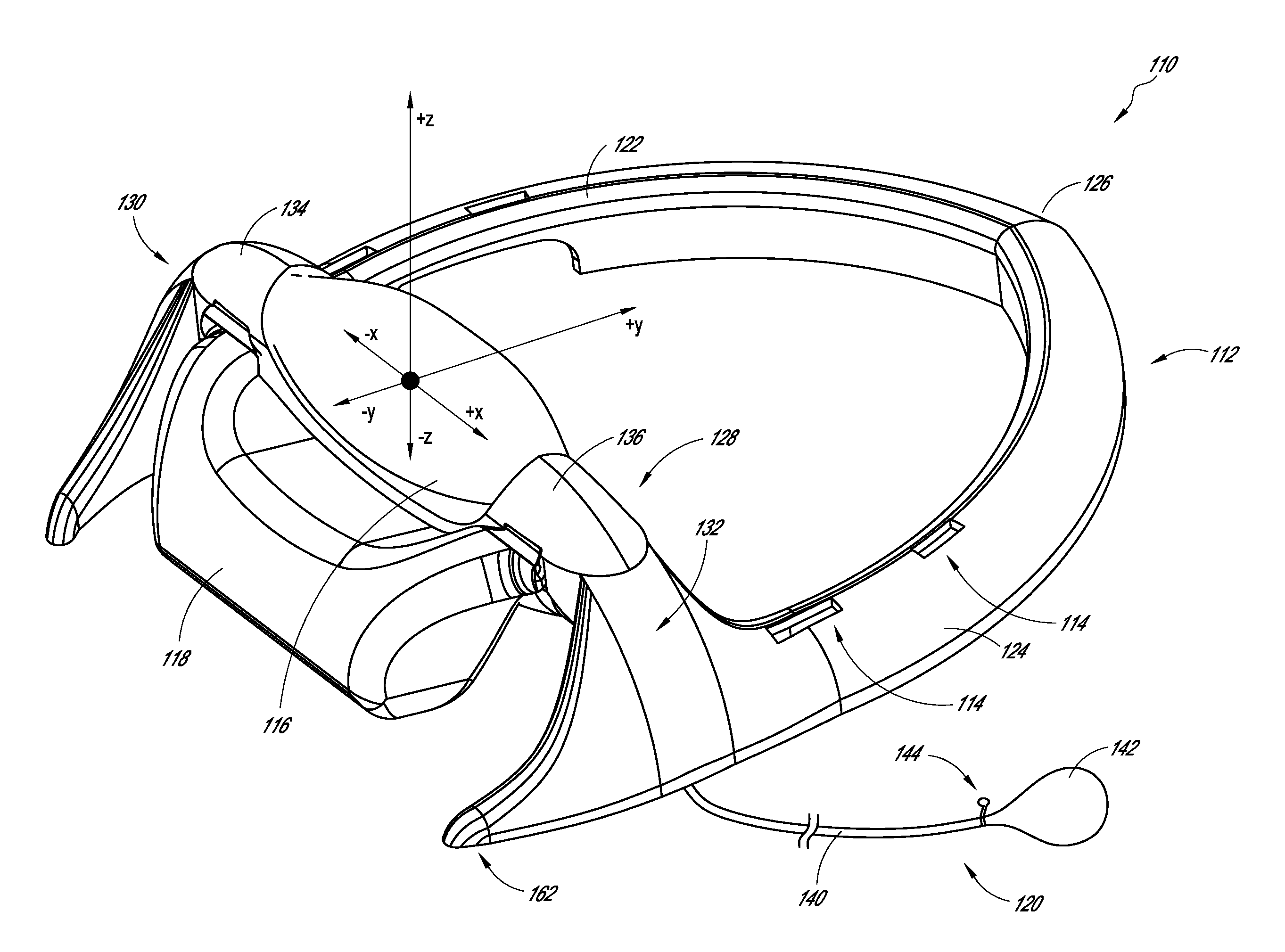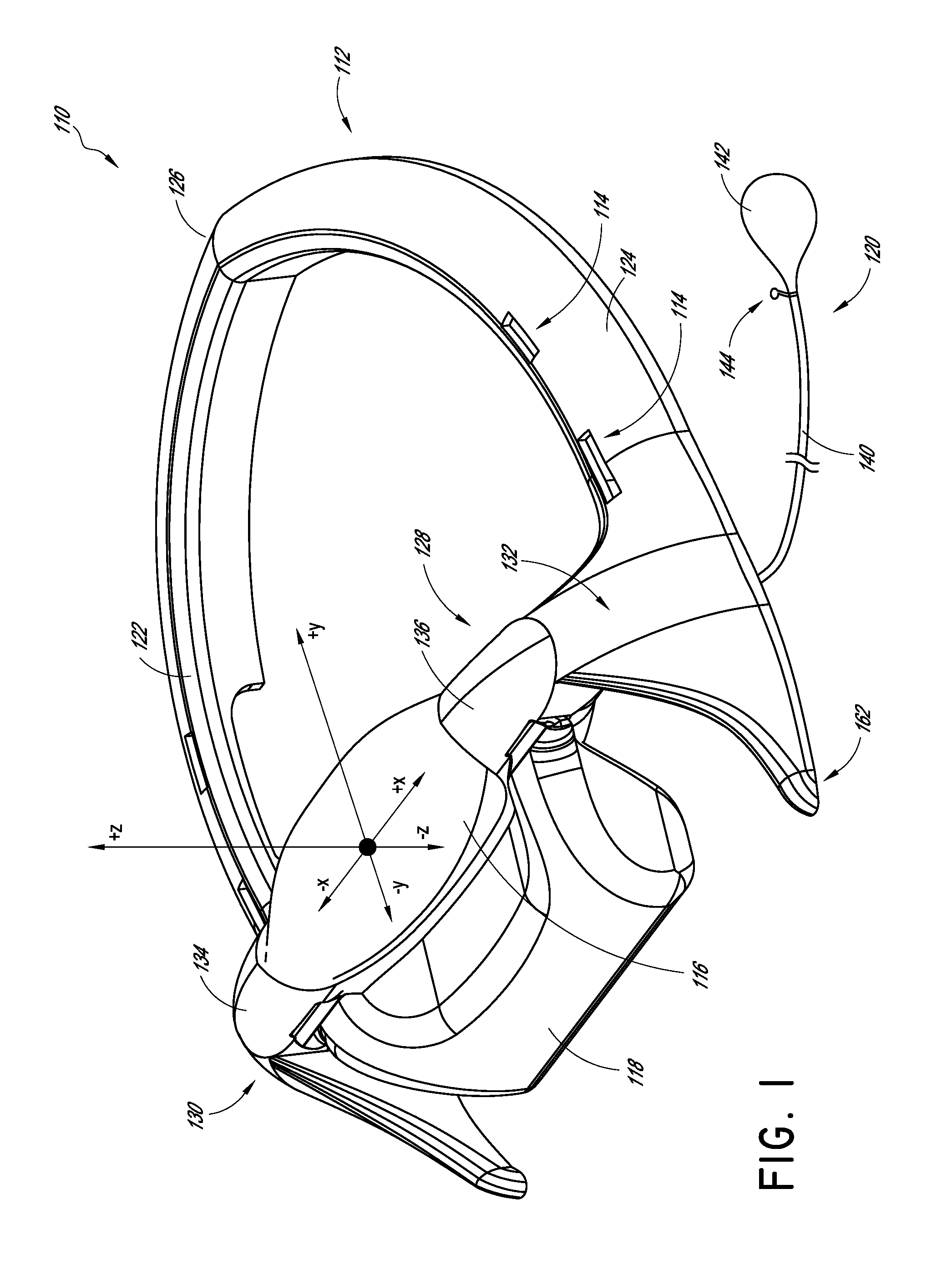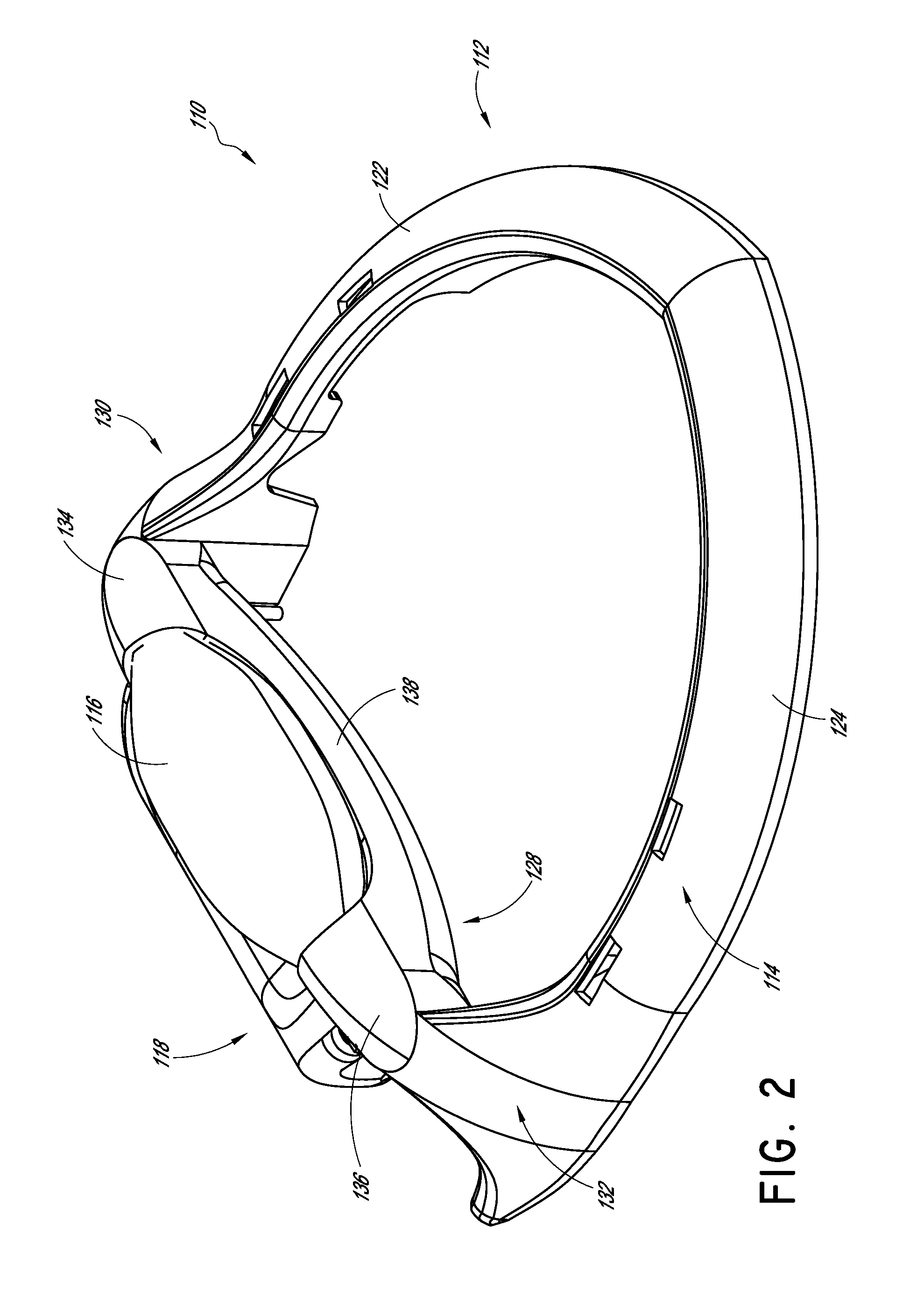Systems and methods for decompression and elliptical traction of the cervical and thoracic spine
a cervical and thoracic spine technology, applied in the field of spinal decompression and elliptical traction systems and methods, can solve the problems of limiting the normal canaliculus seepage and imbibition of adjacent fluids via the vertebral end, further loss of mobility, degeneration and possible nerve damage, etc., to reduce hyper-kyphosis of the upper thoracic spine, and reduce hyper-kyphosis of the upper
- Summary
- Abstract
- Description
- Claims
- Application Information
AI Technical Summary
Benefits of technology
Problems solved by technology
Method used
Image
Examples
Embodiment Construction
[0041]According to some preferred embodiments, the devices, systems and methods described herein relate to a decompression and traction system for imparting the desired lordotic shape into the cervical region of the spine and counteracting hyper-kyphosis of the area of the upper thoracic spine. Some systems can be used to work the spine and surrounding tissue to promote fluid and cellular exchange in and around the intervertebral discs.
[0042]In some embodiments, the device comprises a frame, a first substantially ellipsoidal inflatable bladder transversely in a neck support cradle carried by the frame, a second inflatable bladder supported on the neck support cradle carried by the frame and configured to provide a force vector against the upper thoracic spine when inflated, one or more restraining straps for securing the device to the user's head such that the first and second bladders are disposed against the back of the neck under a stress point in the cervical spine and against t...
PUM
 Login to View More
Login to View More Abstract
Description
Claims
Application Information
 Login to View More
Login to View More - R&D
- Intellectual Property
- Life Sciences
- Materials
- Tech Scout
- Unparalleled Data Quality
- Higher Quality Content
- 60% Fewer Hallucinations
Browse by: Latest US Patents, China's latest patents, Technical Efficacy Thesaurus, Application Domain, Technology Topic, Popular Technical Reports.
© 2025 PatSnap. All rights reserved.Legal|Privacy policy|Modern Slavery Act Transparency Statement|Sitemap|About US| Contact US: help@patsnap.com



